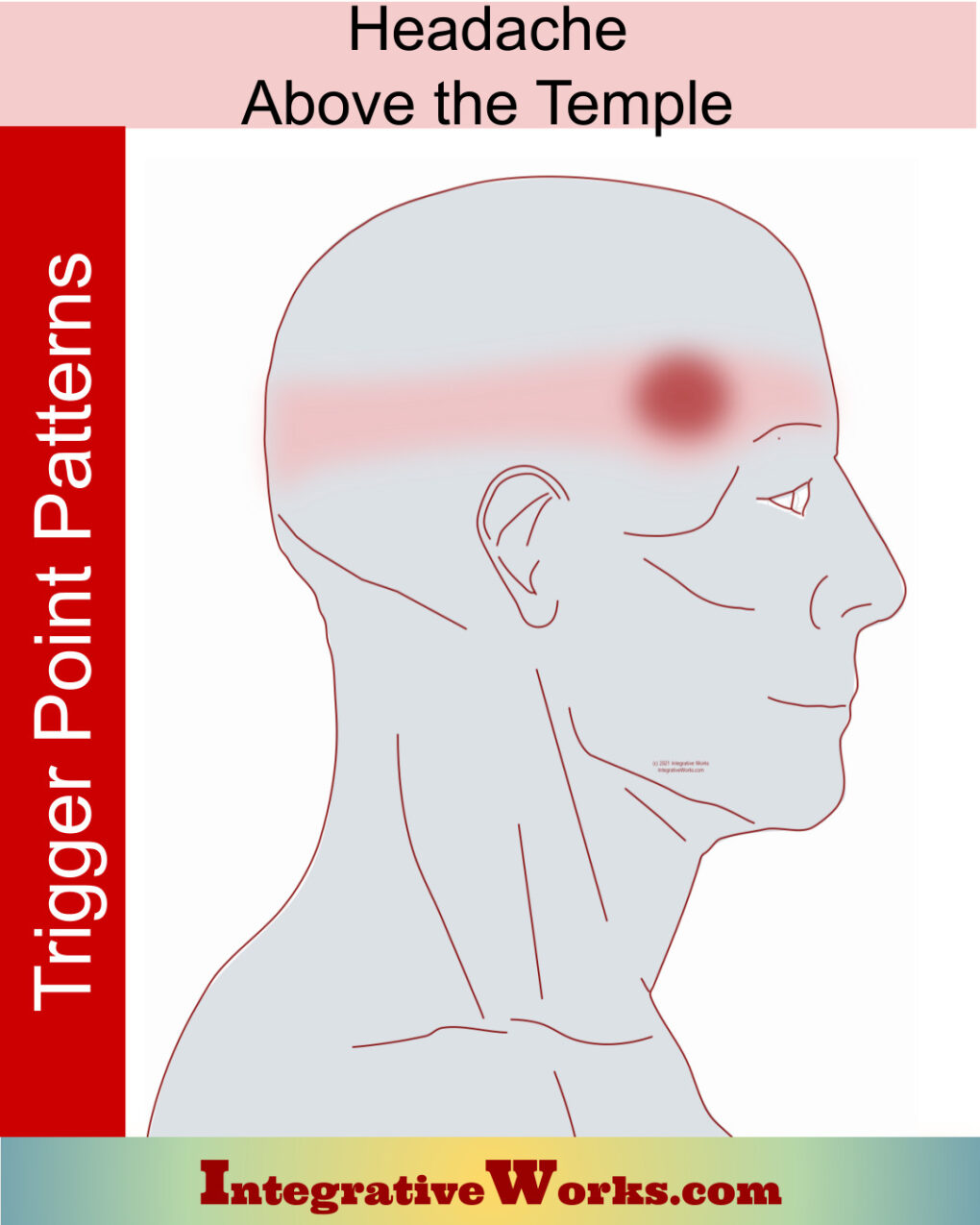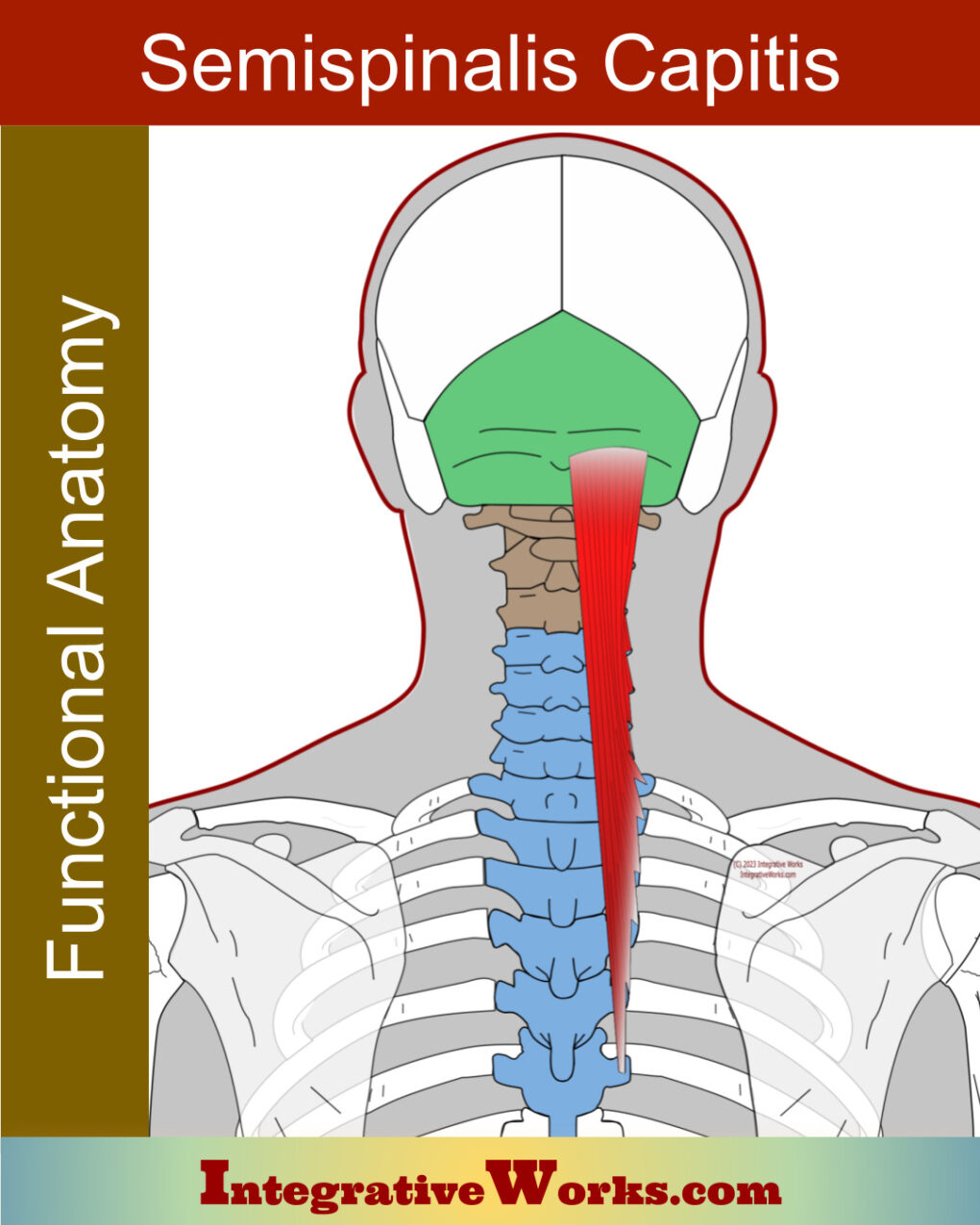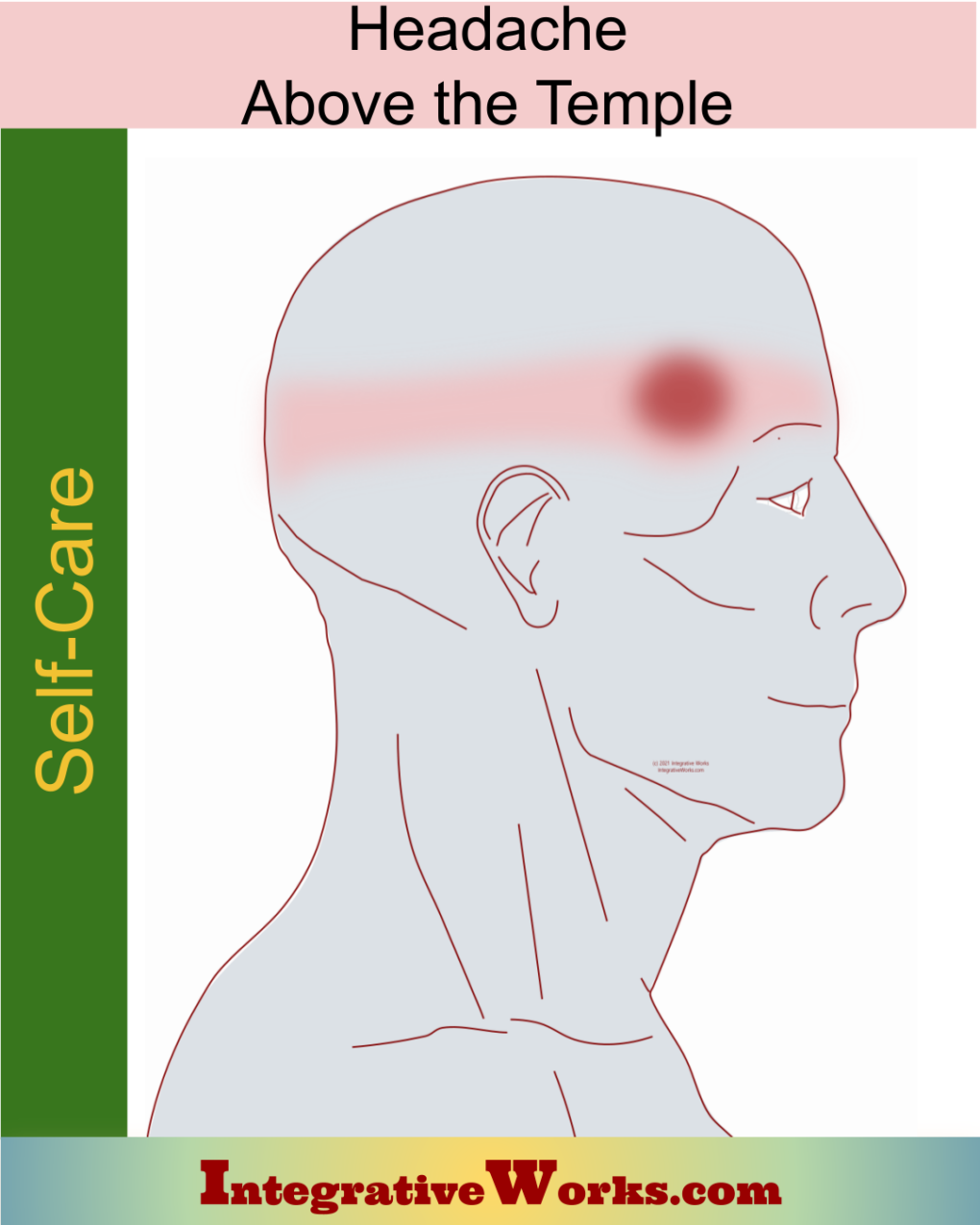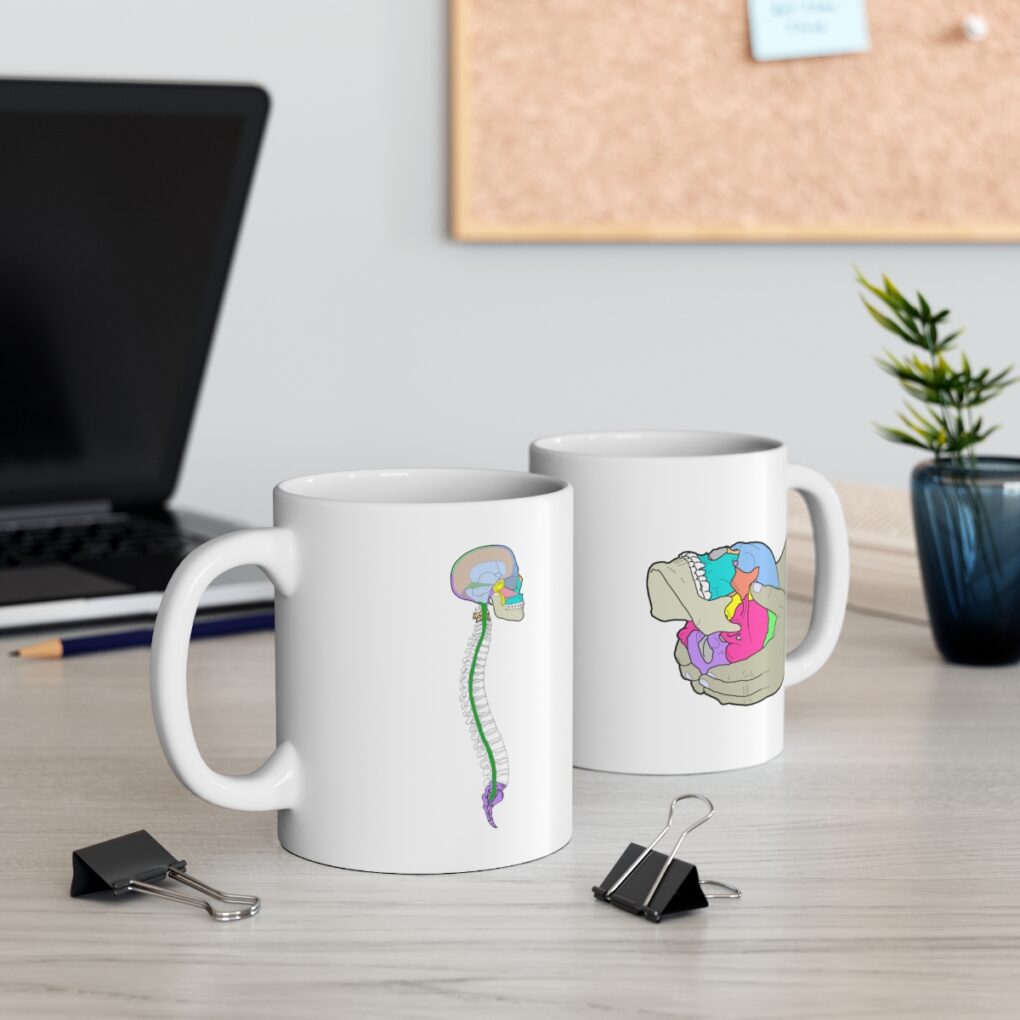Table of Contents
- How People Describe This Pain Pattern
- How You Activate and Intensify This Pain Pattern
- Self-Care – Getting Relief on Your Own
- Musculoskeletal Anatomy Behind Your Pain
- Therapy Notes for Massage and Bodywork
How People Describe This Pain Pattern
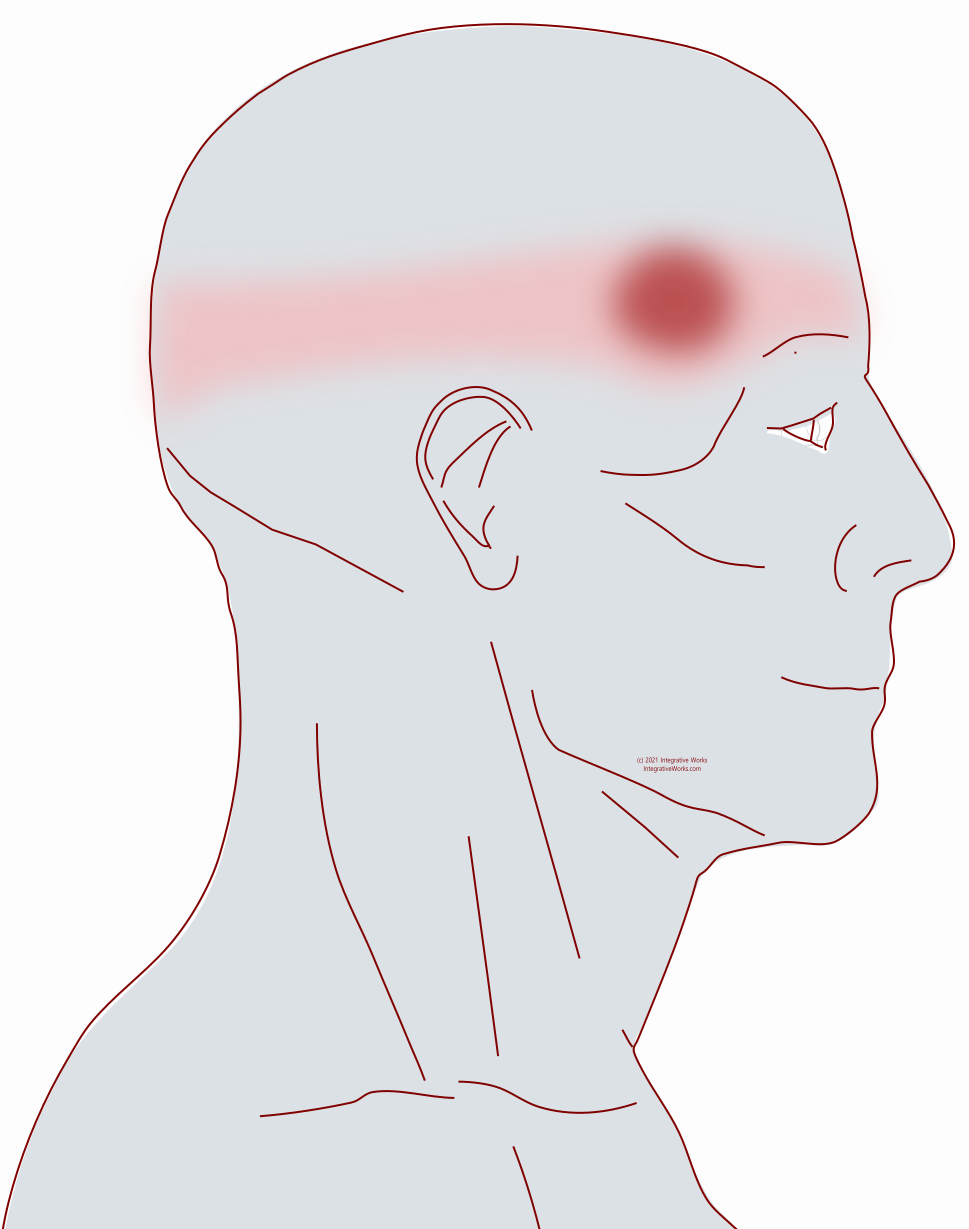
People complain of pain in their temple(s) but touch the spot just above the temple. It takes a little investigative work to nail the right trigger point.
At times this occurs by itself. Often, this headache pain occurs with other pain patterns. It can be hard to single out without specific questions. It occurs most often with the headache at the back of your head. This one compares most closely to the headache in the temple but notice that it is higher and without the neck and eye tension.
Most often, clients say that they got it from “sleeping wrong.” They’ll complain about a click or pop in the top of their neck that started the headache. I’ve had that happen to me while reading in bed before sleep. I’ll get a little click with a light headache and then wake with a dull headache in the morning.
How You Activate and Intensify This Pain Pattern

Most often, clients say that they got it from “sleeping wrong.” They’ll complain about a click or pop in the top of their neck that started the headache. I’ve had that happen to me while reading in bed before sleep. I’ll get a little click with a light headache and then wake with a dull headache in the morning.
At times, they can pinpoint laying on their back with the base of their head laying on a hard surface before the headache started. This can start the headache pattern, especially if the surface was cold and the muscle was chilled, compressed and twisted while laying there.
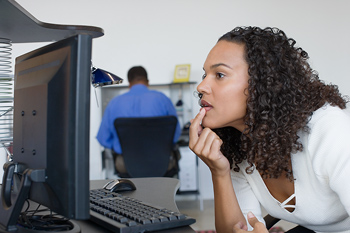
This is also a problem. There are several muscles that get aggravated by jutting the chin forward and resting it on your hand. You’ll see it in several posts. It is worse when you use your hand to support the weight of your head. That really wedges the top vertebra out of place.
The Musculoskeletal Anatomy Behind Your Pain
Musculoskeletal Anatomy
This post on anatomy contains standard information about the origin, insertion, function, and innervation of muscles. Additionally, it includes information on functional considerations and anomalies.
Find Related Posts
Anatomy posts have a grid of all related posts. This includes posts on pain patterns, self-care, therapy notes, NMT protocols, cranial techniques, and cases.
Getting Relief on Your Own
Clinically Proven
Self-Care Strategies
This post has strategies for getting relief on your own. Explore how to change your activities, stretch and other strategies that relieve the pain associated with this trigger point.
Therapy Notes for Massage and Bodywork
Support Integrative Works to
stay independent
and produce great content.
You can subscribe to our community on Patreon. You will get links to free content and access to exclusive content not seen on this site. In addition, we will be posting anatomy illustrations, treatment notes, and sections from our manuals not found on this site. Thank you so much for being so supportive.
Cranio Cradle Cup
This mug has classic, colorful illustrations of the craniosacral system and vault hold #3. It makes a great gift and conversation piece.
Tony Preston has a practice in Atlanta, Georgia, where he sees clients. He has written materials and instructed classes since the mid-90s. This includes anatomy, trigger points, cranial, and neuromuscular.
Question? Comment? Typo?
integrativeworks@gmail.com
Follow us on Instagram

*This site is undergoing significant changes. We are reformatting and expanding the posts to make them easier to read. The result will also be more accessible and include more patterns with better self-care. Meanwhile, there may be formatting, content presentation, and readability inconsistencies. Until we get older posts updated, please excuse our mess.

Better Bodywork
Through Shared Expertise
Therapy Notes provide details for cranial, spinal, and local joint work. These notes also link to a traditional neuromuscular protocol.
By treating integrative components first, direct work on the muscle becomes less intense while providing longer-lasting relief.
Support Integrative Works to
stay independent
and produce great content.
You can subscribe to our community on Patreon. You will get links to free content and access to exclusive content not seen on this site. In addition, we will be posting anatomy illustrations, treatment notes, and sections from our manuals not found on this site. Thank you so much for being so supportive.
Cranio Cradle Cup
This mug has classic, colorful illustrations of the craniosacral system and vault hold #3. It makes a great gift and conversation piece.
Tony Preston has a practice in Atlanta, Georgia, where he sees clients. He has written materials and instructed classes since the mid-90s. This includes anatomy, trigger points, cranial, and neuromuscular.
Question? Comment? Typo?
integrativeworks@gmail.com
Follow us on Instagram

*This site is undergoing significant changes. We are reformatting and expanding the posts to make them easier to read. The result will also be more accessible and include more patterns with better self-care. Meanwhile, there may be formatting, content presentation, and readability inconsistencies. Until we get older posts updated, please excuse our mess.

